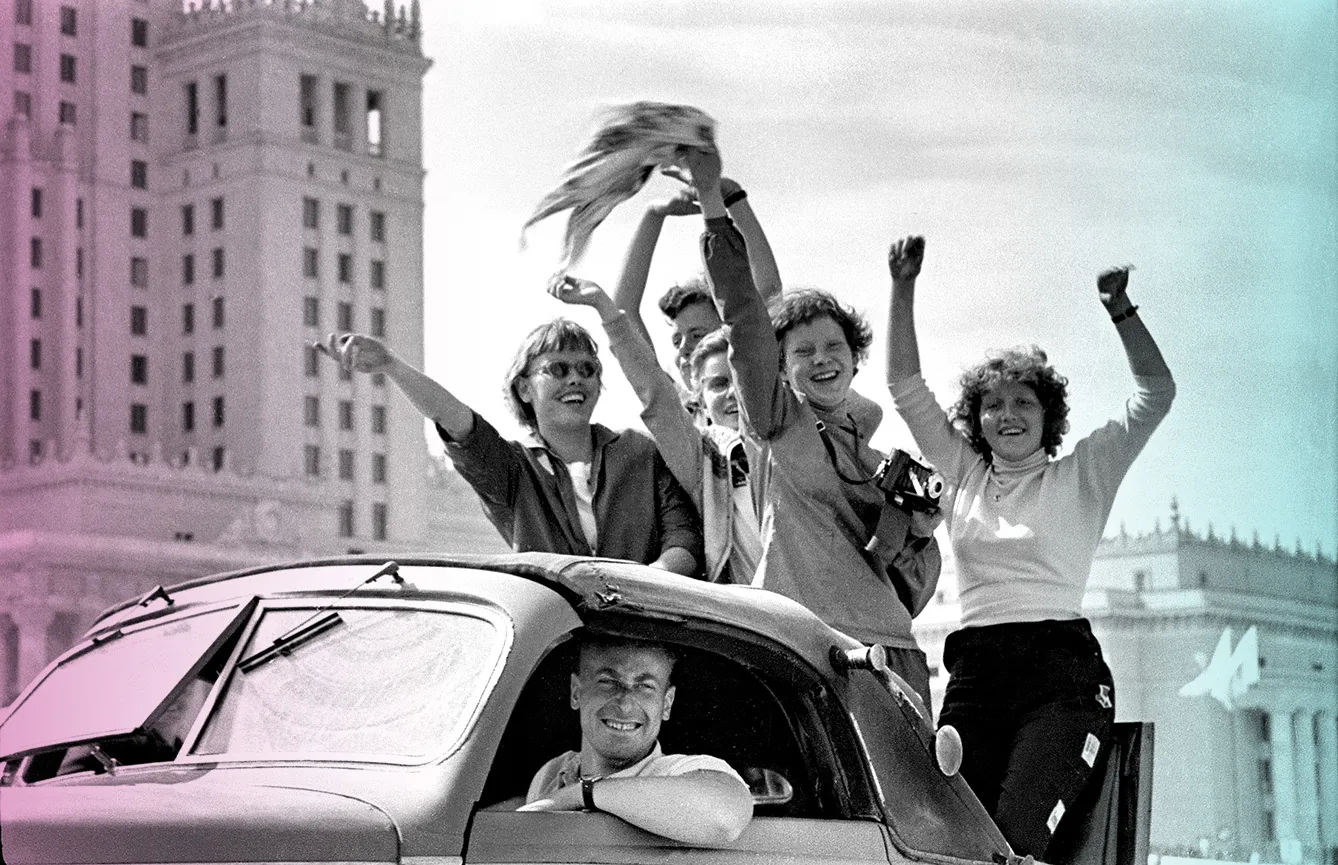World War II for Europe ended in May 1945, but two years later, the sinews of peace, as famously introduced by Winston Churchill’s 1946 Fulton speech, was stretched on both sides of the Iron Curtain. One problem for former allies, now opposite combatants of the Cold War, was to convince the public that they were the ones promoting peace against their counterpart’s hostility. The Cold War was, therefore, not all about the arms race; it was about propaganda.
The World Festival of Youth and Students, launched by the Communist Bloc in 1947, was a part of that effort. Arguably successful in terms of establishing the narrative, it was a cultural endeavor. Thousands, and sometimes even tens of thousands, participants came to celebrate consequent events in the series, and the number of countries represented was far beyond the most generously calculated number of communist allies.
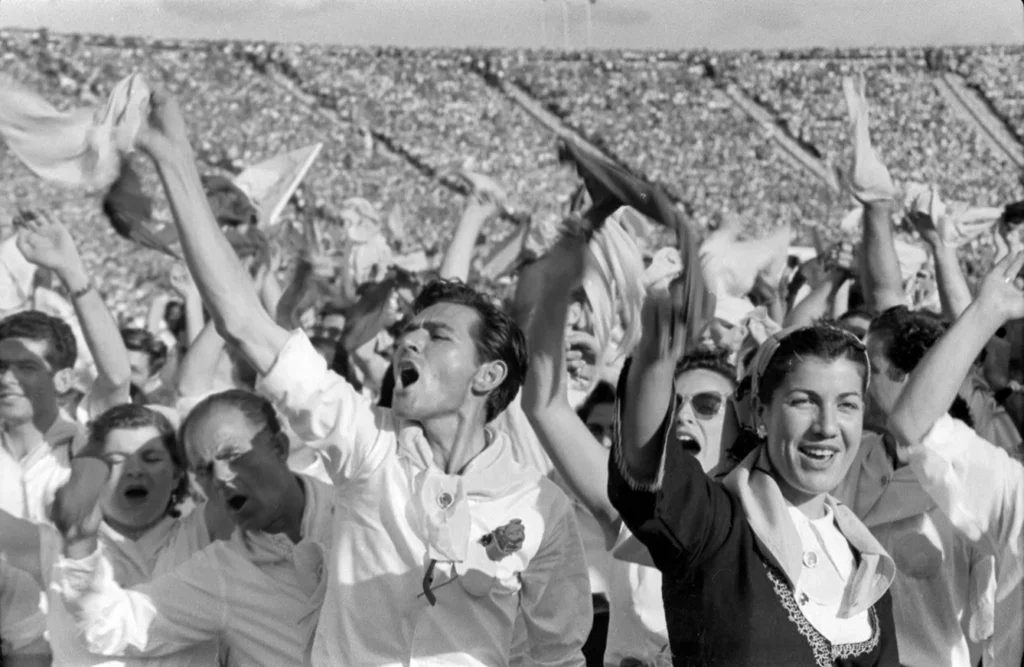
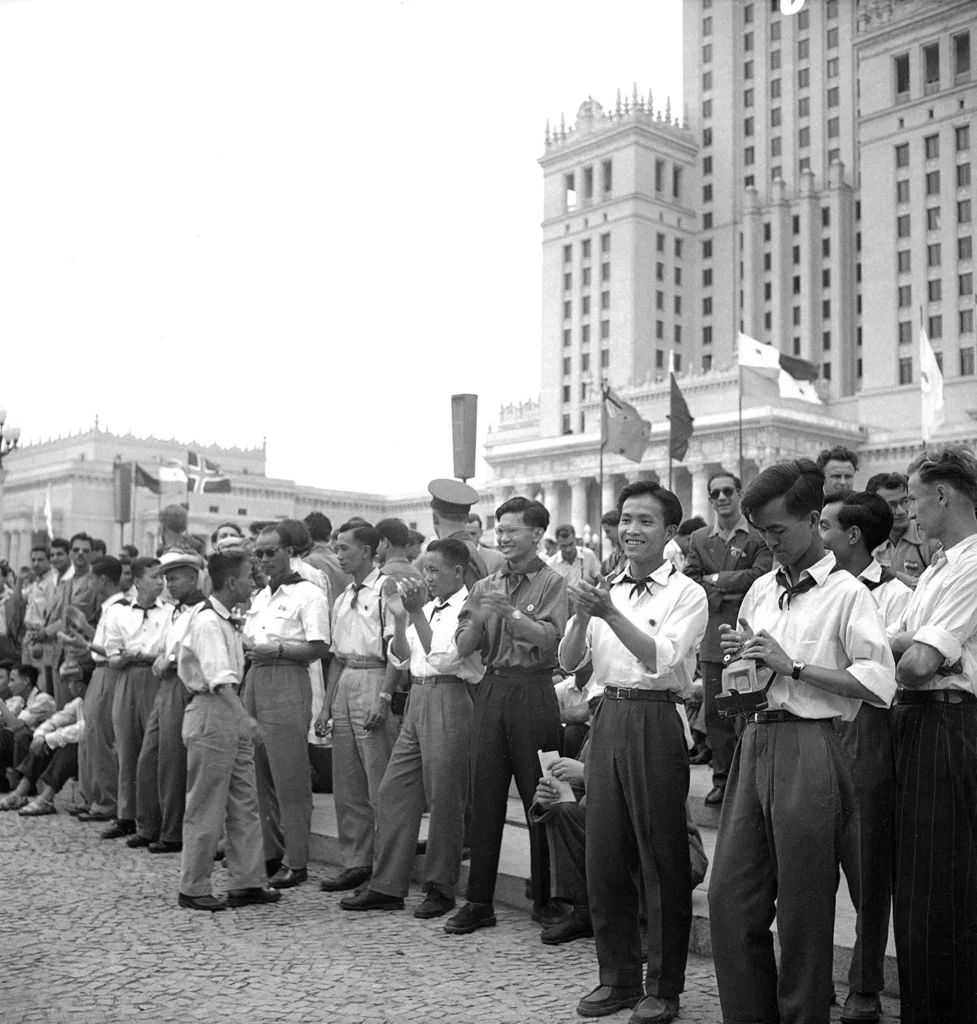
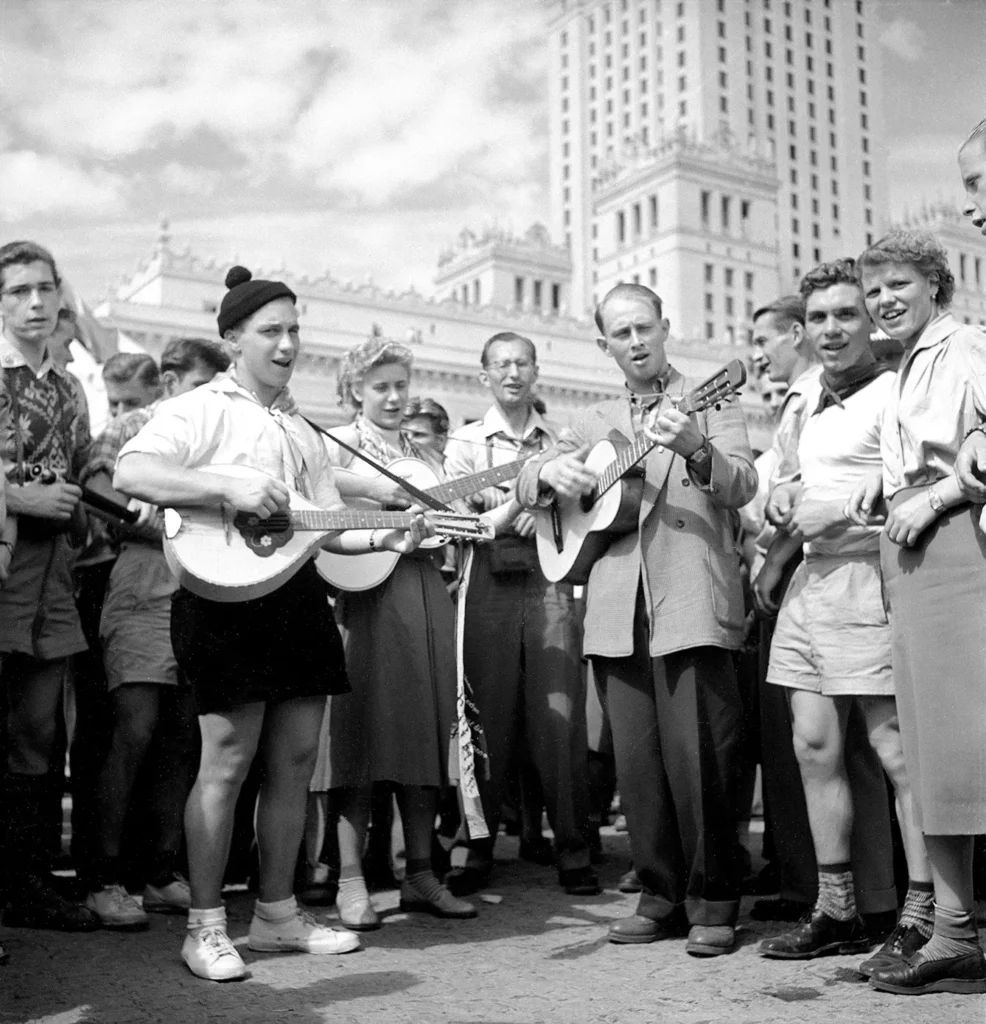
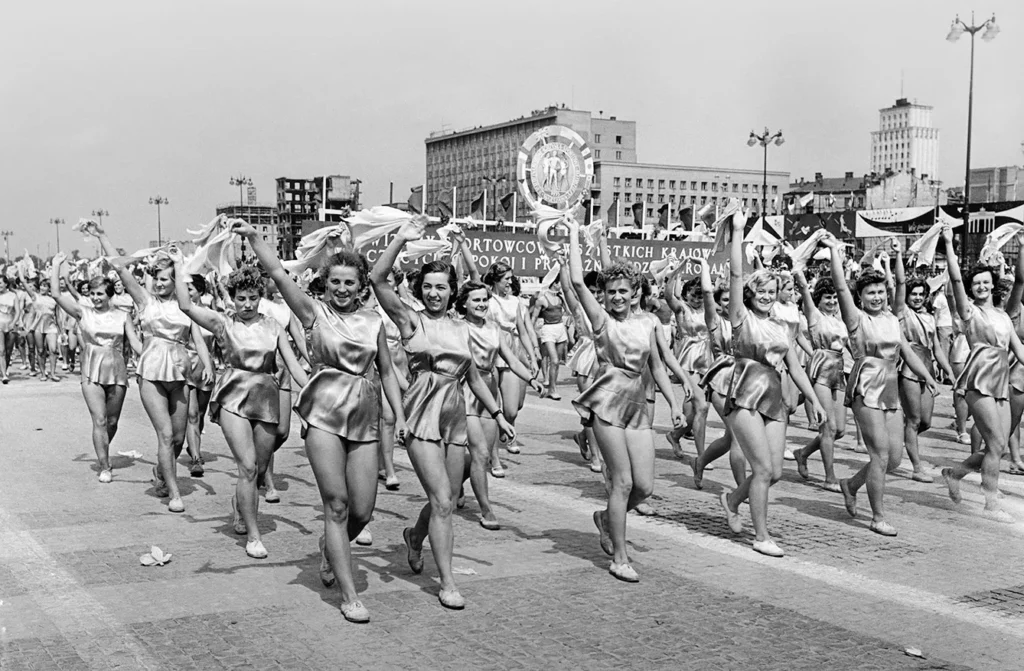
A youth festival of a bygone era
The fifth installment of the World Festival of Youth and Students, held in 1955, gathered in Warsaw, Poland. Some thirty thousand attendees and Polish cultural historians still remember it as a major development in the country’s cultural affairs.
As each festival had its own motto, its meaning soon became far from innocent. Prague’s first event of 1947 was held under the slogan “Youth Unite, Forward for Lasting Peace!” but Warsaw’s 1955 event promoted the motto “For Peace and Friendship – Against the Aggressive Imperialist Pact.”
And though the empire in question was obviously, if tacitly, the so-called “collective West,” members of 114 countries, including Western ones, came to Warsaw to celebrate the idea. Perhaps against the official agenda, their presence was among the most refreshing and interesting parts of the story.
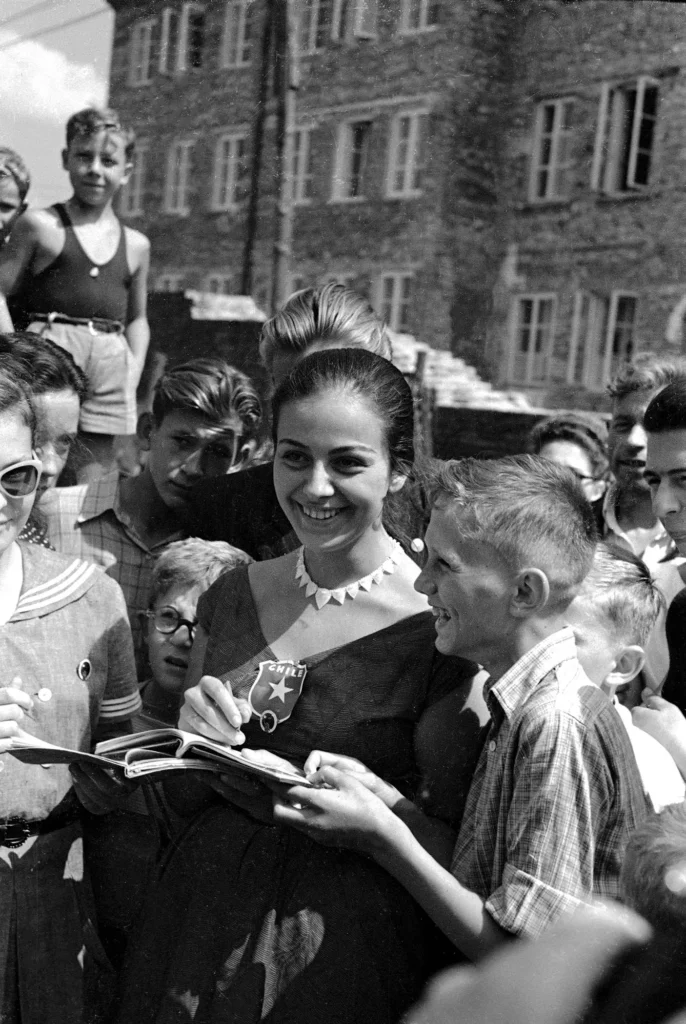
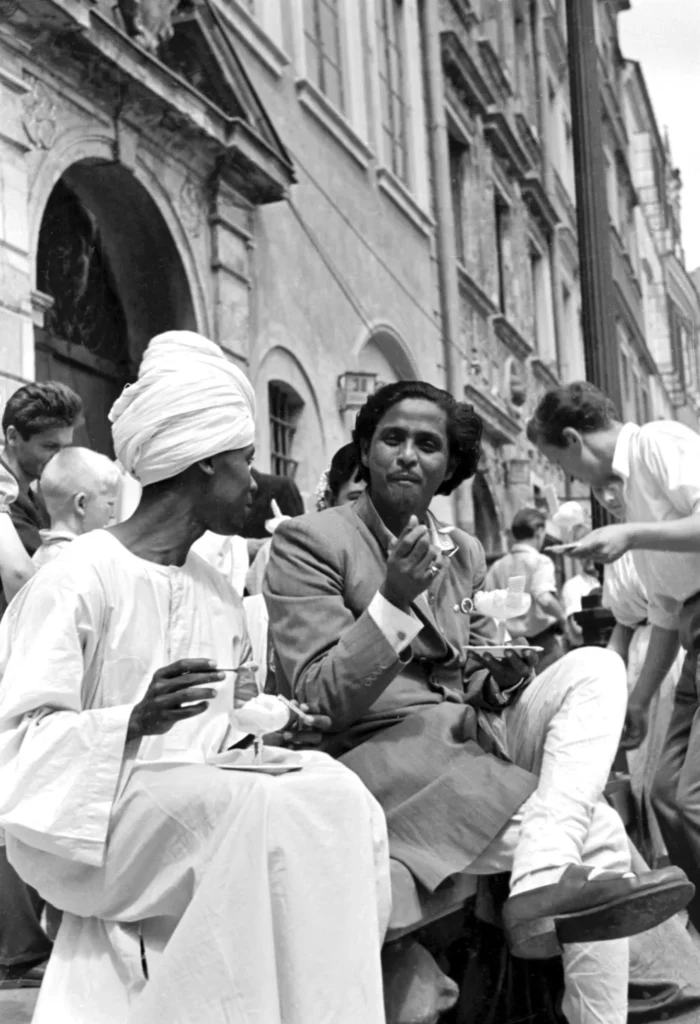
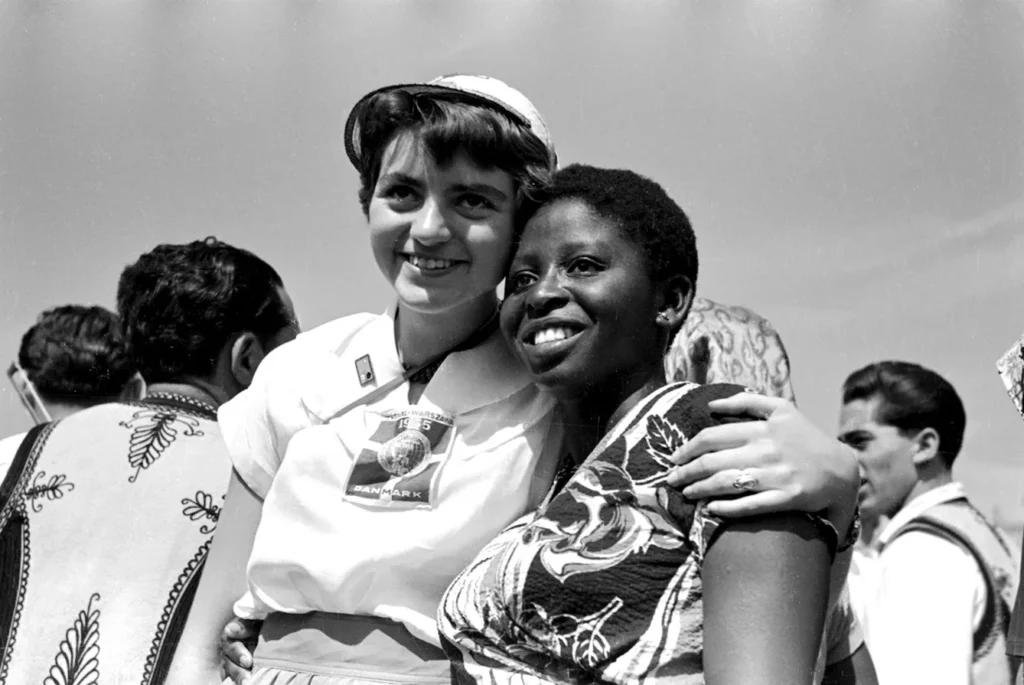
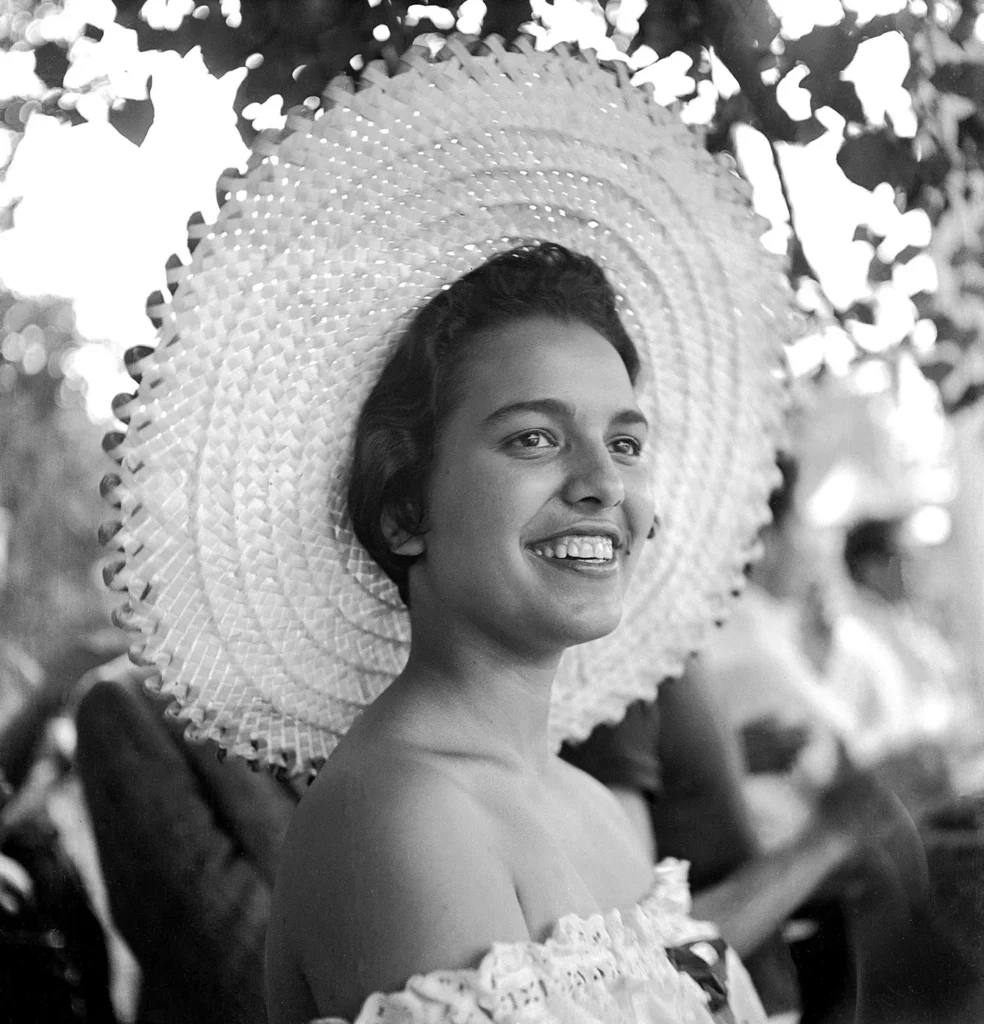
For context, just think about 1955 Warsaw. Ten years after the war that had left most of the city in ruins, it had mostly been cleared of debris. However, thousands of people still lived in makeshift dwellings and wore only secondhand clothes from Western war recovery aid. Two massive and recently completed investments, the Palace of Culture and Science in the city center and the 10th Anniversary Stadium on the city’s eastern bank, overlooked a city under reconstruction.
Dressed to impress
The feast needed a makeover, and for these few days in August, desolate buildings were dressed in decorations. Aesthetics were crucial: the first decade of post-war communism was ruled by Socialist Realism – the idea that art should be traditional, decent, and democratic. 1955 introduced full-scale Modernism: Abstract art that was finally accepted as revolutionary and, therefore, fitting to the communist narrative.
The crown jewel in this city-turned-art-exposition: an actual, site-specific mural depicting Picasso’s masterpiece “Guernica” as part of a pacifist manifesto called “The Vietnam Massacre.” And it was not even the largest feature, as the new axis of the city, old Marszałkowska Street, now connecting the Palace of Culture with the new living districts nearby, was decorated with a 400-meter-long frieze by rising Polish modernist artists, Wojciech Fangor and Henryk Tomaszewski.
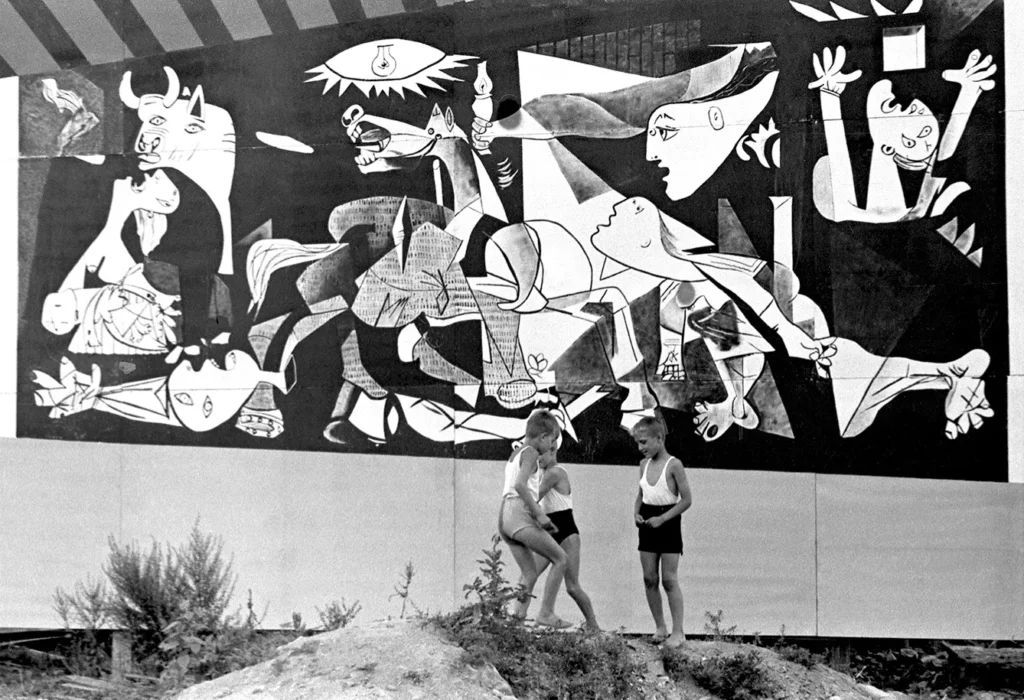
By later accounts, Polish poet Agnieszka Osiecka recalled the freshness of the decorations – not patriotic white and red, not Holy Mary blue, not socialist red – but just… decorations, colorful, there to underline festivity. In a propaganda effort, the socialist regime worked to stock shops that, soon after the end of the festival, returned to their former emptiness.
A festival that changed history
Though meetings and discussions were somewhat restricted – participation was granted as a reward for achievements in work or study – the festival brought the intellectual ferment. The opportunity to meet French and Italian youth in a country strictly limiting foreign travel was a highly appreciated substitution for the latter.
Also, the propaganda effort was not that uncomfortable. After all, it was about a much-desired peace. Still, more importantly – the festival city makeover was proof that public events could be something besides the dull, speech-filled defilades of the socialist working-class heroes, whose symbolic significance was far from creative.
As one of the numerous factors, the feast set the stage for change. Soon, the role of First Secretary of the Polish Communist Party took Władysław Gomułka, marking a change from former Stalinist apparatchiks. What started as communist propaganda, the Festival of Youth and Students is remembered as a stunt that got out of communist control.


